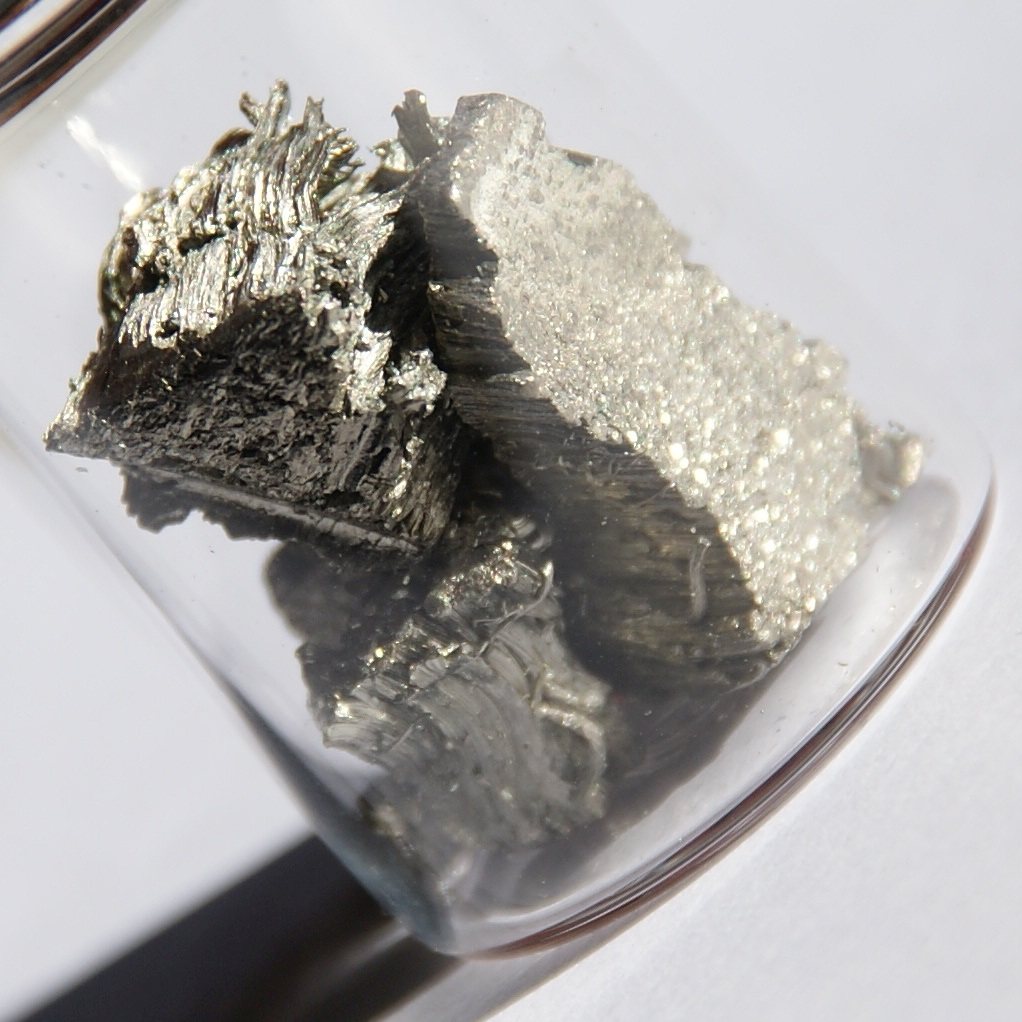Scandium
21
Sc
Group
3
Period
4
Block
d
Protons
Electrons
Neutrons
21
21
24
General Properties
Atomic Number
21
Atomic Weight
44.955912
Mass Number
45
Category
Transition metals
Color
Silver
Radioactive
No
From the Latin word Scandia, Scandinavia
Crystal Structure
Simple Hexagonal
History
In 1879, Lars Fredrik Nilson and his team detected scandium in the minerals euxenite and gadolinite.
Nilson prepared 2 grams of scandium oxide of high purity.
Per Teodor Cleve showed that scandium had properties similar to those predicted by Mendeleev for eka-boron.
Metallic scandium was first prepared in 1937 by Fischer and his colleagues.
Nilson prepared 2 grams of scandium oxide of high purity.
Per Teodor Cleve showed that scandium had properties similar to those predicted by Mendeleev for eka-boron.
Metallic scandium was first prepared in 1937 by Fischer and his colleagues.
Electrons per shell
2, 8, 9, 2
Electron Configuration
[Ar] 3d1 4s2
The stable form of scandium is created in supernovas via the r-process
Physical Properties
Phase
Solid
Density
2.989 g/cm3
Melting Point
1814.15 K | 1541 °C | 2805.8 °F
Boiling Point
3109.15 K | 2836 °C | 5136.8 °F
Heat of Fusion
16 kJ/mol
Heat of Vaporization
318 kJ/mol
Specific Heat Capacity
0.568 J/g·K
Abundance in Earth's crust
0.0026%
Abundance in Universe
3×10-6%

CAS Number
7440-20-2
PubChem CID Number
23952
Atomic Properties
Atomic Radius
162 pm
Covalent Radius
170 pm
Electronegativity
1.36 (Pauling scale)
Ionization Potential
6.5615 eV
Atomic Volume
15.0 cm3/mol
Thermal Conductivity
0.158 W/cm·K
Oxidation States
1, 2, 3
Applications
Scandium is used in sports equipment such as golf iron shafts, baseball bats, bicycle frames and fishing rods.
Scandium iodide, along with sodium iodide, when added to a modified form of mercury-vapor lamp, produces a form of metal halide lamp.
The radioactive isotope 46Sc is used in oil refineries as a tracing agent.
Scandium iodide, along with sodium iodide, when added to a modified form of mercury-vapor lamp, produces a form of metal halide lamp.
The radioactive isotope 46Sc is used in oil refineries as a tracing agent.
Scandium is considered to be of low toxicity
Isotopes
Stable Isotopes
45ScUnstable Isotopes
36Sc, 37Sc, 38Sc, 39Sc, 40Sc, 41Sc, 42Sc, 43Sc, 44Sc, 46Sc, 47Sc, 48Sc, 49Sc, 50Sc, 51Sc, 52Sc, 53Sc, 54Sc, 55Sc, 56Sc, 57Sc, 58Sc, 59Sc, 60Sc